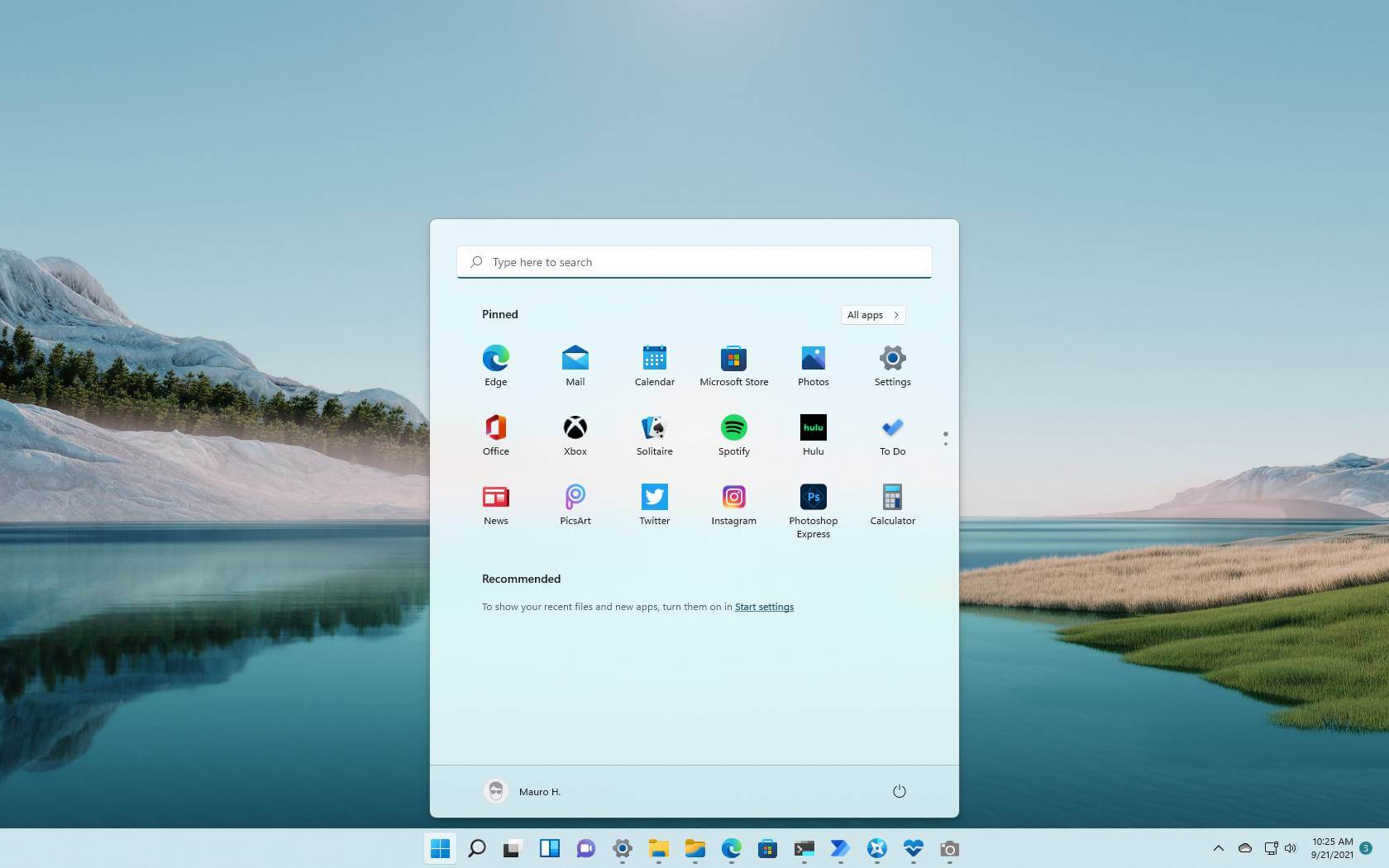Windows 11 (version 21H2) is the next version of Windows (codenamed Sun Valley) that will replace Windows 10. This is the most significant update of the past decade, and it will release on October 5.
In a nutshell, Windows 11 is based on Windows 10, and it’s focused on modernizing the look and feel of the desktop and elements across the experience, plus it introduces many new features. For example, this new version includes a new design language using rounded corners and new semi-transparent materials. You will find a new simplified Start menu that ditches the Live Tiles design in favor of traditional icons. The Taskbar is now aligned to the center of the screen. And Microsoft is also introducing new multitasking tools like Snap Layouts, Snap Groups, and Desktops.
Furthermore, Windows 11 has many overhauled experiences like the new out-of-box experience (OOBE), Settings, Notification Center, and Quick Settings. And there are updates for many inbox apps, such as File Explorer, Calculator, Photos, Snipping Tool, Microsoft Store, Tips, and many others.
Microsoft is also introducing new ways to allow developers will build, distribute, and monetize applications.
What’s the Windows 11 release date?
Windows 11 will be available on October 5, 2021, as an optional install, and it’ll be offered as a free upgrade for devices already running Windows 10. However, since there are new system requirements, only eligible computers will be able to upgrade.
Also, October 5 marks the beginning of the rollout, as the company will be slowly making the version available to compatible devices. Initially, Windows 11 will be available for computers with newer hardware known to have a smooth upgrade experience. Over time, the latest version will expand to more devices based on hardware eligibility, reliability metrics, age of the hardware, and other factors. Then sometime during the second half of 2022, Microsoft will make Windows 11 fully available for compatible devices.
Will I need new hardware to upgrade to Windows 11?
The answer is No if you have a computer with modern hardware. The answer is Yes if the device has older hardware. This is because Windows 11 increases the minimum hardware requirements, which means that many computers already Windows 10 won’t be compatible.
In a nutshell, Windows 11 requires an Intel 8th Gen or newer or Ryzen 2000 or newer processor, 4GB of RAM, 64GB of internal storage, and more importantly, Trusted Platform Module (TPM) version 2.0 and Secure Boot.
How will I be able to get Windows 11?
The easiest way to get Windows 11 would be using the Windows Update settings. However, you would still be able to perform an in-place upgrade with the Update Assistant, and the Media Creation Tool will be available to create a bootable USB flash drive to perform a clean install. You will also be able to download the Windows 11 ISO file if you want to take that path.
Any installation method you choose will require a complete reinstallation. However, if you use Windows Update or in-place upgrade options when coming from Windows 10, the settings, apps, and files will be preserved. If you choose a fresh install, then the files, settings, and apps will be erased.
What new features and changes are expected on Windows 11?
On Windows 11, you can expect to see a new Microsoft Store with a more user-friendly interface, modern design, and significant policy changes to be more open for end-users and developers.
Microsoft is also be making a big push on refreshing the desktop with new a Start menu that has a minimalistic design. The menu is based on the design the company was working on for Windows 10X. It floats above the taskbar, and it follows the new OS-style design with rounded corners and semi-transparent materials.
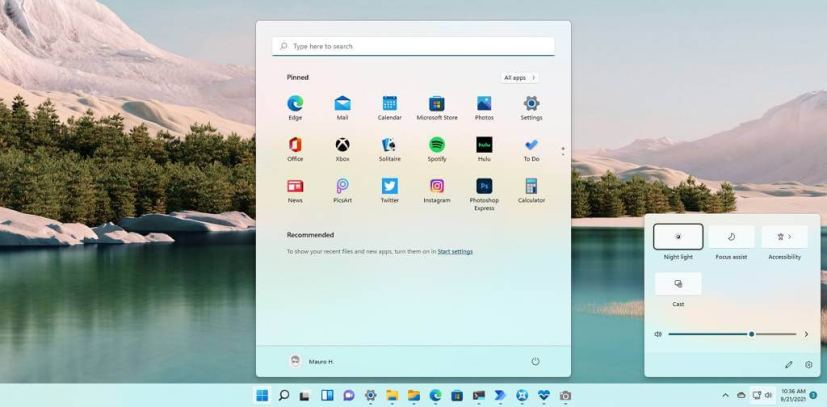
Windows 11 also has a new Taskbar that is now aligned to the center of the screen. The redesigned experience also includes a new Start button and new buttons to access several features, including Search, Task View, Widgets, and Chat.
Also, there’s a new system tray with access to new Notification Center and Quick Settings menus that replace Action Center.
“Widgets” is another feature coming in this new version. The new experience that slides in from the left side of the screen to provide different types of information, such as weather, news, tracking, sports, entertainment, and more. Technically, this is an evolution of “news & interests” available on Windows 10.
Snap Layouts, Snap Groups, and Desktops are new features to improve the multitasking experience, and they will help to optimize screen real estate.
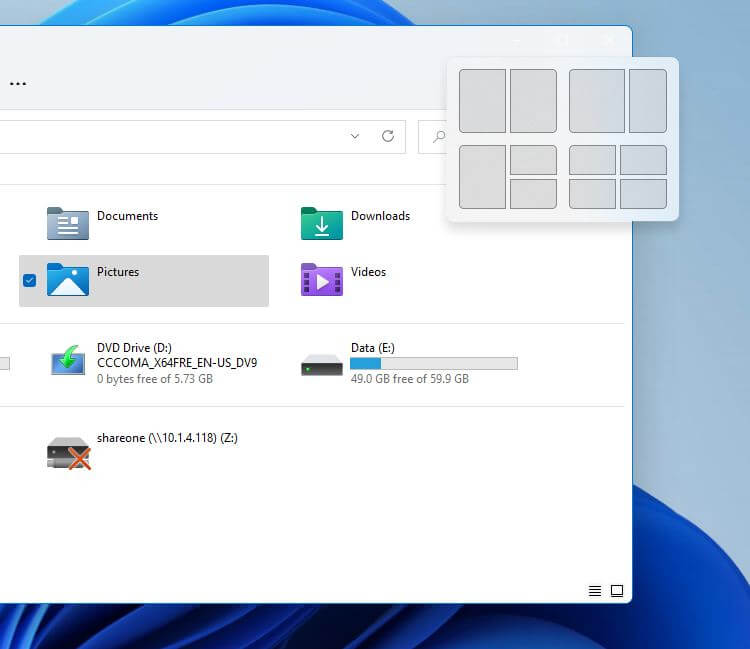
Windows 11 will introduce a new Auto HDR feature to convert SDR games into HDR content automatically. In addition, you will find a redesigned touch keyboard experience and a new version of the Voice Typing application to convert voice into text. And Microsoft will bring Linux GUI app support with the Windows Subsystem for Linux.
You will also find an updated File Explorer experience. However, it is not a completely new application. Instead, this is the same app, but with an updated interface with the new modern design language, new iconography, and new command bar.
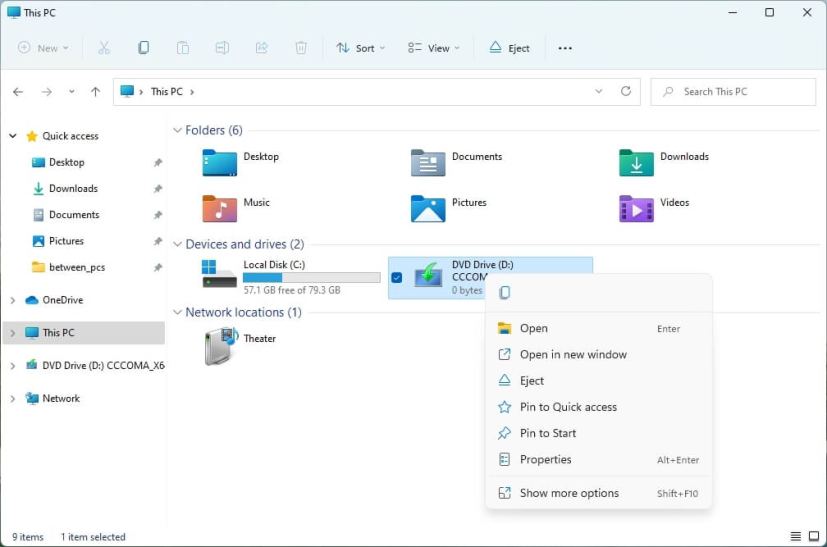
The Settings app is getting a complete interface overhaul. The new app regroups and integrates new settings, ports more features from Control Panel, removes the homepage, and a lot more.
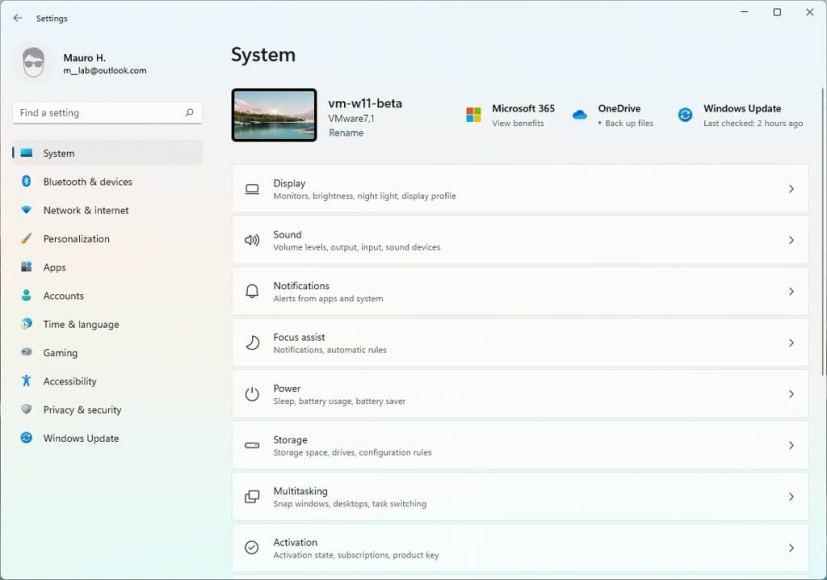
Across the desktop experience, you will find new iconographic, system font, rounded corners, a new semi-transparent material known as Mica, an element that shines through the background without impacting performance or battery life and falls back to a solid color when the app is not in focus.
In addition, this version introduces many significant under-the-hood improvements, including system optimizations to make Windows 11 feel snappier and more responsive. Microsoft has also been working to make resume from sleep faster. Windows Hello sign-in process up to 30 percent faster. In addition, by expanding the use of compression technologies, the OS noticeably reduces the overall footprint, and updates will be up to 40 percent smaller.
Finally, Windows 11 is also introducing a new out-of-box experience (OOBE) to complete the initial setup of the operating system with a new account, privacy settings, and custom preferences when setting a new device or after a clean installation.
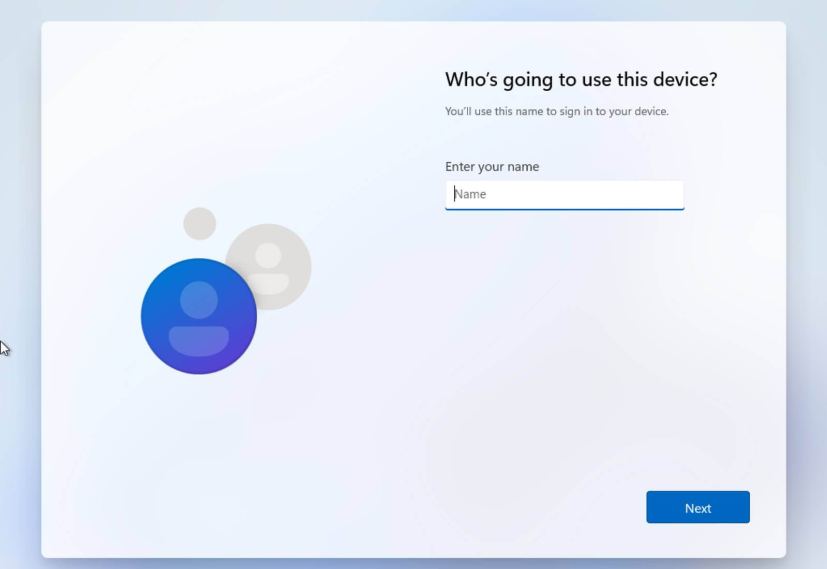
The new experience moves away from the blue and dark colors in favor of white and gray colors with a more intuitive and friendly interface to match the new modern design language of Windows 11. You will also find new animations as you move through each page.
What’s going to happen to Windows 10?
Windows 10 will continue to be available for the foreseeable future like any other previous operating system version. However, the official documentation page already says that Windows 10 will reach the end of life on October 14, 2025, which means that Microsoft will no longer offer updates or any support after this time.

